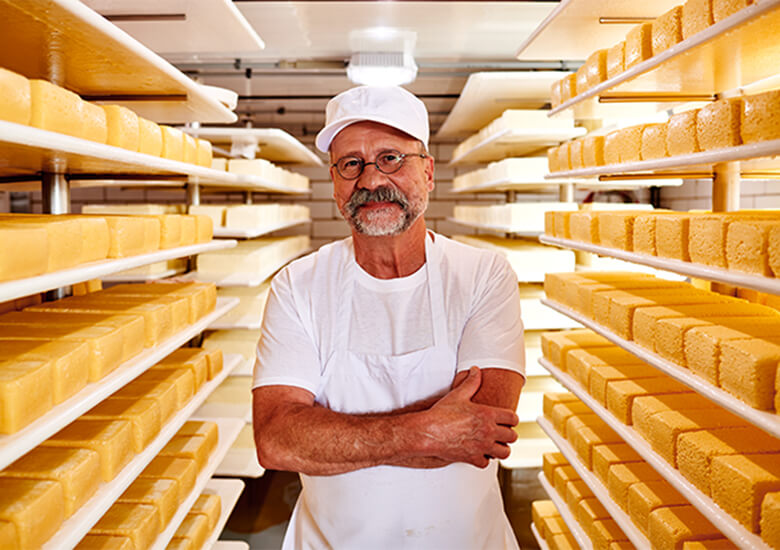Checking Out Melbourne Made Cheese: Why Floridia Cheese Is a Must-Try
Unlocking the Keys of Artisanal Cheese Making: A Step-by-Step DIY Overview
In the realm of cooking workmanship, artisanal cheese making stands as a testimony to the delicate balance between custom and development. Each action in the process, from selecting the right milk to refining aging strategies, holds within it a wide range of knowledge passed down with generations. As we get started on this trip to debunk the art of creating elegant cheeses, we are encountered with a tapestry of skills and tricks waiting to be deciphered. Join us as we discover the ins and outs of this old craft, where art, scientific research, and persistence merge to produce tastes that entice the senses.
Selecting the Right Milk
When getting started on the journey of artisanal cheese making, the option of milk plays a critical function in establishing the top quality and attributes of the final product. The type of milk picked influences the flavor, structure, and overall account of the cheese.
When picking milk for cheese production, it is necessary to consider the fat web content. Higher fat material in milk can result in a creamier and richer cheese, while reduced fat content may bring about a drier and stronger appearance. In addition, the resource of the milk, whether from cows, goats, sheep, or buffalo, adds unique tastes and characteristics to the cheese (Floridia Cheese Thomastown). Each kind of milk brings its own subtleties, permitting for a wide variety of cheese ranges to be crafted based upon the chosen milk. Eventually, the option of milk is a fundamental decision that sets the structure for a successful artisanal cheese-making undertaking.
Culturing and Coagulating
To launch the cheese-making procedure, the essential steps of culturing and coagulating need to be carefully carried out to change milk into curds and whey. Culturing includes presenting valuable germs to the milk, which then begins the fermentation process. These germs transform lactose (milk sugar) into lactic acid, developing the acidic environment necessary for coagulation. The type of culture used can significantly impact the flavor, texture, and ripening of the last cheese product.

The timing and temperature control throughout culturing and coagulation are vital factors that influence the final end result of celebrity. Appropriate implementation of these actions is crucial to ensure the wanted appearance, taste, and consistency of the artisanal cheese being generated.
Draining Pipes and Pushing Curds
After the milk proteins have actually coagulated and the curds have actually been cut to launch whey, the next vital step in artisanal cheese making includes draining and pushing the curds to accomplish the preferred structure and consistency of the final cheese product. The time for draining pipes can differ depending on the kind of cheese being made and the desired moisture content.
Pushing helps remove any continuing to be whey and compacts the curds to create a strong cheese wheel. Proper draining pipes and pushing are crucial actions that substantially impact the high quality and attributes of the artisanal cheese being produced.
Aging and Flavoring Techniques
Applying meticulous aging and flavor methods is critical in improving the depth and complexity of artisanal cheeses, elevating their taste profiles to charming levels of improvement and sophistication. Aging plays a critical duty in creating the special tastes and structures that identify artisanal cheeses.
Seasoning strategies additionally contribute significantly to the final preference of artisanal cheeses. Cheesemakers might choose to introduce additional flavors by incorporating active ingredients such as natural herbs, seasonings, or also fruits right into the cheese during the manufacturing procedure. Furthermore, some cheeses are washed or scrubed with numerous fluids, such as salt water or alcohol, to enhance their structures and tastes.
Covering and Storing Cheeses

Conclusion
In final thought, understanding the art of artisanal cheese making involves thoroughly choosing the ideal milk, adhering to precise culturing and coagulating processes, draining and pressing curds effectively, and using different aging and flavor strategies. Bear in mind to cover and save your cheeses properly to guarantee ideal taste and structure growth.
Each kind of milk brings its very own subtleties, permitting for a vast array of cheese click here for info selections to be crafted based on the picked milk.After the milk healthy proteins have coagulated and the curds have been cut to launch whey, the following critical action in artisanal cheese making entails draining pipes and pushing the curds to accomplish the preferred structure and uniformity of the last cheese product. A lot of cheeses must be covered in wax paper or cheese paper to enable them to breathe while safeguarding them from drying out. For cheeses that need to proceed aging, such as bloomy peels or cleaned peels, guarantee they are saved in a trendy setting like a cheese cavern or a fridge set to the suitable temperature. By paying focus to the covering and storage of artisanal cheeses, cheese makers and enthusiasts can maintain the stability of these delicacies and completely enjoy their complex flavors.